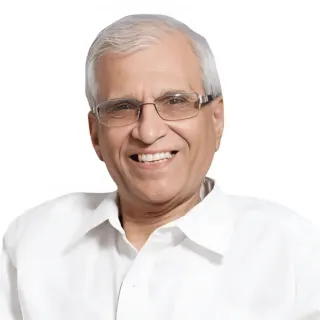Best Liver Transplant Surgeons in Artemis Hospital Gurgaon
 24 December,2025
Read More
24 December,2025
Read More
Enquire now in case of any assistance needed
 21 March,2024
21 March,2024

Your heart is the tireless engine that keeps you going, pumping life-giving blood throughout your body. But what happens when the highways delivering that blood become blocked? Coronary artery disease (CAD) can cause fatty deposits to build up in your coronary arteries, restricting blood flow to your heart muscle. It can lead to angina (chest pain), shortness of breath, and even heart attack.
There's good news! If your arteries are blocked, a minimally invasive procedure called angioplasty with stent placement can help restore blood flow and improve your heart health. In this blog, we will explore this procedure and its benefits.
Fill up the form and get assured assitance within 24 hrs!
Coronary angioplasty is a minimally invasive cardiac procedure to treat blockages in the arteries supplying blood to the heart. It is one of the most common cardiac surgeries, with over 2 million stent placement procedures performed every year.
During angioplasty, a heart specialist inserts a flexible tube into a blood vessel, generally in the arm, wrist, or groin. The catheter is then guided through the arteries until it reaches the blockage. Once there, a tiny balloon at the tip of the catheter is inflated, pushing plaque build-up against the artery wall and opening the blockage.
But here's the twist: A small mesh tube called a stent is often placed inside the artery simultaneously to keep the artery open for a long time. This stent acts like a scaffold, opening the artery and preventing it from narrowing again.
A stent is a tiny device that can save lives. It comprises fine metal mesh 15 to 20 mm in length. Stents are made of stainless steel, cobalt-chromium, or platinum-cobalt. They might also have a drug coating to prevent scar tissue growth between the stent gaps. These types of stents are known as drug-eluting stents. They offer better long-term results and are used in over 95% of cases.
Stents work by preventing the re-narrowing of the arteries. When the clogged artery is opened by just using the balloon, there is a 30% chance that it may recoil and become narrowed again. Using stents reduces the probability of recoil to 10-15%. If the cardiologist opts for drug-eluting stents, it further reduces to 2-3%.
A stent placement is a permanent procedure. However, as mentioned earlier, there is a 2 to 3% chance that the artery will narrow again. It usually occurs within 6 to 9 months of stent implantation, in which case, the cardiologist will insert another stent to open the artery.
You can reduce the likelihood of getting multiple stents by following the doctor's advice on lifestyle modifications such as lowering cholesterol levels, eating a balanced diet, quitting smoking, and managing blood pressure.
People with sedentary lifestyles and bad eating habits are prone to a condition known as atherosclerosis. In atherosclerosis, plaque accumulates inside the arteries. Plaque causes blockages in the arteries, narrowing them and reducing the amount of blood flowing through them.
When atherosclerosis occurs in vessels carrying blood to the heart (coronary arteries), it is known as coronary artery disease. Angioplasty with stent placement is the first choice of treatment for such patients. However, if multiple coronary arteries are blocked, a CABG might be the right procedure.
A cardiologist recommends angioplasty with stent placement to patients if –
Angioplasty with stent placement is crucial for improving blood flow to the heart. But before you head into the cath lab, a few crucial steps help ensure a smooth and successful experience. These include –
Don't hesitate to voice your concerns or ask questions throughout this process. Understanding the procedure and what to expect beforehand can significantly reduce anxiety and promote a smoother experience.
Coronary angioplasty with stent placement is a simple procedure first performed in 1977 in Switzerland. It is natural to get jitters before any surgery, no matter how easy and simple it may be. But to help you ease, here is a brief about the procedure and the steps involved.

Coronary angioplasty with stent placement is a highly successful and safe procedure. It has been performed for about 50 years and has seen significant improvements over time. But no invasive procedure is without risks. Complications in angioplasty are low, with an incidence of 1 in 100 procedures. Some of the risks associated with coronary angioplasty are –
Other not-so-common complications include kidney injury, heart attack, and irregular heartbeat. Choosing expert and experienced cardiologists can significantly reduce your chances of developing such complications.
Angioplasty with stent placement is a powerful tool to improve your heart health. However, long-term lifestyle changes are essential to prevent future blockages. You can improve the surgery outcomes by following a few simple steps –
With proper care and lifestyle modifications, recovering from angioplasty with stent placement can be smooth. Remember, a positive outlook and commitment to a healthy lifestyle go a long way in promoting long-term heart health and overall well-being.
Coronary angioplasty with stent implantation is a minimally invasive and effective procedure that can open blocked arteries and improve blood flow to the cardiac muscles. It can significantly alleviate angina and other heart disease symptoms, allowing you to live a more fulfilling life. Timely diagnosis and intervention are the key to a successful treatment. So, if you ever experience any symptoms of heart trouble, don't hesitate to talk to your doctor. They can help you make an individualized treatment plan to keep your heart healthy and strong.
Fill up the form and get assured assitance within 24 hrs!
Doctor of Pharmacy
Dr. Deepanshu Siwach is a skilled clinical pharmacist with a Doctor of Pharmacy degree.?He has 4+?years of experience and has worked with thousands of patients. He has been associated with some of the top hospitals, such as Artemis Gurgaon.
Chairman
Cardiac Electrophysiologist, Interventional Cardiologist
Dr. T.S. Kler, a Padma Bhushan awardee and the Chairman of Fortis Heart & Vascular Institute, transformed the field of electrophysiology in India through over 35,000 angioplasties and innovative device implants. After earning the MRCP (UK) in 1989, he launched India's first electrophysiology lab at Escorts Heart Institute in 1993, where he conducted the country's first ICD implant in 1995 and the first CRT-D implant in 2000. His introduction of HIS bundle pacing in 2015 resulted in a 30% improvement in cardiac synchronization outcomes. He is one of the leading doctors in Gurgaon, India, and he is currently focused on integrating AI-driven models for arrhythmia prediction, analyzing over 10,000 ECGs with a machine learning algorithm....
Senior Consultant
Medical Oncologist
Nanavati Super Specialty Hospital, Mumbai
WhatsApp UsSenior Director
Gynecologist and Obstetrician, IVF Specialist
Max Super Speciality Hospital, Shalimar Bagh, New Delhi
WhatsApp UsSenior Director
Gynecologist and Obstetrician, IVF Specialist
Max Smart Super Speciality Hospital, Saket, New Delhi
WhatsApp UsSenior Director
Gynecologist and Obstetrician
Max Smart Super Speciality Hospital, Saket, New Delhi
WhatsApp UsSenior Director
Gynecologist and Obstetrician
Max Smart Super Speciality Hospital, Saket, New Delhi
WhatsApp UsSenior Director
Gynecologist and Obstetrician
Max Smart Super Speciality Hospital, Saket, New Delhi
WhatsApp UsThe Art of Effective Communication
 24 December,2025
Read More
24 December,2025
Read More
 23 December,2025
Read More
23 December,2025
Read More
 17 December,2025
Read More
17 December,2025
Read More
 16 December,2025
Read More
16 December,2025
Read More
 10 December,2025
Read More
10 December,2025
Read More
 09 December,2025
Read More
09 December,2025
Read More
Trusted by Patients
"I am Asim from Bangladesh and was looking for treatment in India for neuro. I visited many websites to get the complete information regarding the treatment but I was not satisfied as I was getting confused. In the meanwhile, one of my friends suggested I seek help from Medi Journey as he experienced his medical journey very smoothly and was satisfied with it. They have filtered the top 10 doctors as per experience, the success rate of surgery & profile, so it helps us to choose the best treatment in India. "
"For my knee surgery, Medi Journey guided me to BLK Hospital where I received exceptional care. The team's support and the expertise at BLK Hospital exceeded my expectations. Thank you Medi Journey for making my medical journey stress-free. "
"I came from Iraq for my granddaughter's eye surgery in India facilitated by Medi Journey, due to critical cases they advised us to get a second opinion from the different hospitals before going to surgery. Finally, we went to Fortis Escort Hospital, which helped us to get more confidence for diagnosis. Fortis Escort Hospital has the best eye surgeon team with the latest instruments. Thanks to all team members for providing a high-quality treatment in India at an affordable cost. "
"I came for my hair transplant in India, before coming I was so confused about choosing the best clinic and surgeon for me. But thanks to God one of my friends had a hair transplant in India through Medi Journey. He recommended me to go with them. I am completely happy with my experience with them. They were always very fast in their responses to me. the success rate of my hair transplant surgery is 100%."
"Artemis Hospital, suggested by Medi Journey, turned out to be a great choice for my treatment. The personalized assistance and medical care were exceptional. I'm grateful to Medi Journey for guiding me to a hospital that perfectly matched my needs. Highly recommended! "
"I came from Afghanistan for my treatment in India at Jaypee Hospital, Noida. I had a fantastic experience with Medi Journey. Kudos to them for their incredible support during my medical journey. They not only took care of all the logistics but also connected me with a fantastic healthcare team. Efficient, caring, and highly recommended for a hassle-free medical tourism experience."
"I am Adam from Kano, Nigeria, one of my friends from Nigeria was facilitated by Medi Journey, and he recommended us to go with them. I sent my all reports to them and within 48 hours they reverted with 4 options from different hospitals. They helped me to get a Visa letter from the hospital, arrange pick-up from the airport, and book a hotel for me. Their team is very honest and throughout our stay in India they are with us they are caring for us like his family members. BLK Hospital is the best hospital in India with a top surgical oncologist surgeon team, a very advanced OT, and a Radiotherapy department. I wish more success to Medi Journey. "
"Great experience at the Max Hospital for my spine surgery and was successfully done. I thank my neurosurgeon and his entire team. I recommended all of my country's people to Medi Journey for treatment in India, they choose the best hospital, the best doctors, and the best cost for patients."
"I came to India from Dhaka, Bangladesh for my father-in-law's cardiac surgery at Fortis Hospital. I was confused about choosing the best surgeon for him before coming, but their team helped me to choose the best hospital and best cardiac surgeon in India with very good cost and 100% success rate of surgery. I am very happy with the services, really they make my journey so comfortable that make me feel at home. Thanks again and I like people to choose "Medi Journey" as your travel guide. "
"I am Mohammad from Bangladesh came to India for my general health checkup. Medi Journey offers me the complete package including Pick-up from the airport, hotel services, and 24-hour assistance. They guide you to choose the best hospital in India, the best cost of treatment with top-most doctors and give you complete information about hotel booking, and pick-up from the airport before coming to India They have the best team to help. Always choose Medi Journey for your treatment in India."





